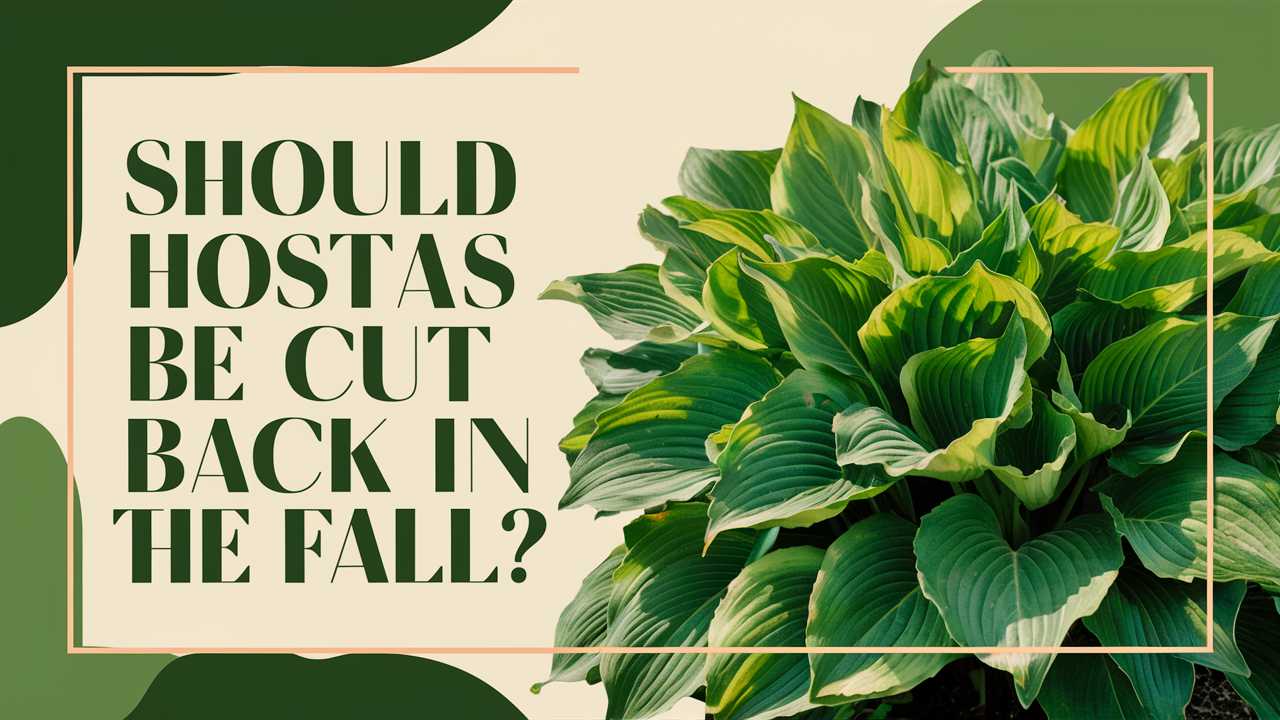This comprehensive guide will explore the intricate relationship between hostas, seasonal changes, and garden care, helping you achieve the best results in your gardening endeavors.
Understanding Hostas

Before diving into the specifics of fall care, let’s first understand what makes hostas such a popular choice for gardeners. Hostas are perennial plants, which means they come back year after year. Belonging to the family Asparagaceae, they are native to East Asia and have adapted well to various climates, making them a favored option for many landscapes.
Varieties Galore
One of the remarkable aspects of hostas is the vast array of varieties available. From the classic blue-green ‘Blue Mammoth’ to the vibrant ‘Gold Standard’ and the stunning variegated types like ‘Patriot’, there’s a hosta for nearly every garden aesthetic. The diverse foliage shapes and sizes further enhance their appeal, allowing gardeners to create dynamic landscapes.
Environmental Adaptation
Hostas thrive in shaded to partially shaded areas, making them ideal for spots in your yard where other plants may struggle to grow. They prefer moist, well-drained soil and benefit from consistent watering, particularly in the warmer months. Understanding these traits is crucial for cultivating a thriving hosta garden.
The Seasonal Cycle of Hostas
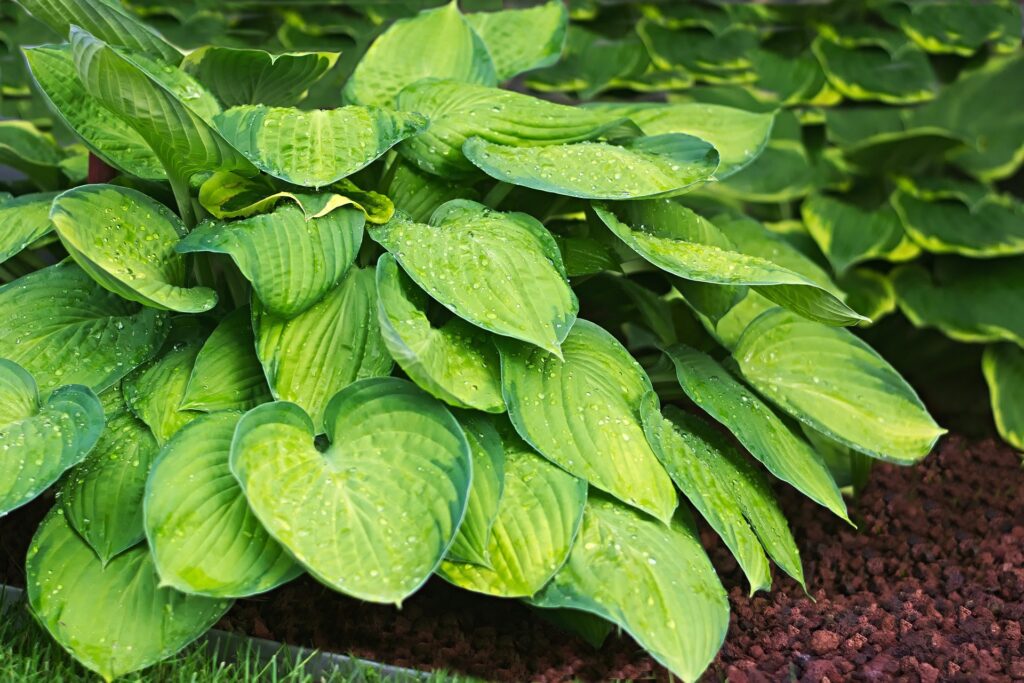
Hostas go through a distinct life cycle each year. During spring, they emerge from dormancy with fresh shoots, displaying vibrant foliage as they grow throughout the summer. By the fall, however, these lush greens begin to change.
Autumnal Transition
As temperatures drop and daylight hours shorten, hostas naturally begin preparing for winter. Their leaves start to change color, often taking on yellow or brown hues before wilting. Understanding this seasonal progression is crucial to making informed decisions regarding fall care.
To Cut Back or Not to Cut Back?
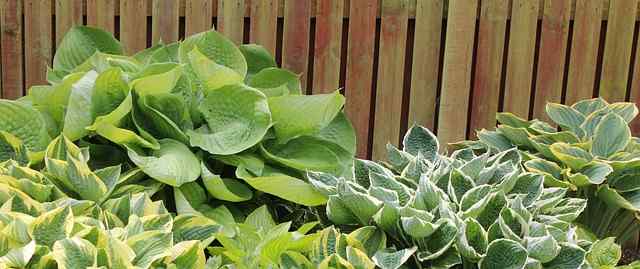
The primary debate among gardeners revolves around whether or not to cut back hostas in the fall. The answer largely depends on your garden’s specific conditions and your personal goals for maintenance.
Reasons to Cut Back Hostas in the Fall
Prevent Disease and Pests: Leaving dead or decaying foliage can create an environment conducive to pests and diseases. Cut back your hostas to eliminate potential sources of trouble.
Aesthetic Appeal: If you prefer a tidy garden, cutting back hostas can provide a more cleanly groomed look. This is especially true if you’re a gardener who values presentation during fall and winter months.
Ease of Spring Cleanup: By cutting back plants in the fall, you can streamline your spring cleanup process. Fewer dead leaves in the biosphere mean less work when you’re ready to tend to your garden.
Reasons to Skip Cutting Back Hostas in the Fall
Winter Interest: Many gardeners appreciate the unique shapes and textures of hosta leaves as they transition into the winter months. Leaving the foliage intact can create visual interest, even when other plants have gone dormant.
Environmental Benefits: Leaving the foliage provides shelter for beneficial insects, offering them a refuge from harsh winter conditions. This can support a healthier garden ecosystem come spring.
Natural Fertilization: As old leaves decay over the winter, they return valuable nutrients to the soil, enriching the environment for the new growth in the following season.
Considering Your Local Climate
Where you live can dramatically influence your choice. In warmer climates, hostas might retain their foliage longer, while in colder regions, foliage may die back sooner. Understanding local climatic conditions gives you insight into how to best approach hosta care.
Best Practices for Fall Care
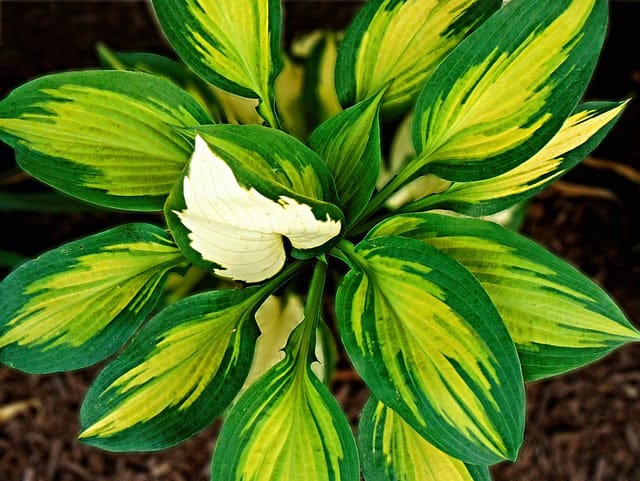
Now that we’ve explored both sides of the debate, here are some best practices and tips regardless of whether you choose to cut back your hostas.
Assessing the Foliage
If you decide to cut back your hostas, it’s important to begin by assessing the condition of the leaves. Healthy foliage can remain, while damaged, yellowing, or diseased leaves should be pruned. This assessment can also guide your decision as you determine which areas of your hostas need attention.
Timing Is Everything
If you choose to prune, timing is crucial. Ideally, you’ll want to wait until the first hard frost has occurred, which allows the leaves to wilt naturally. This not only reduces the risk of transferring diseases but also helps ensure that you’re not cutting healthy growth too early.
Techniques for Pruning
When it’s time to cut back, use clean, sharp shears to avoid damaging the plant. Cut leaves close to the ground, taking care not to disturb the crown of the plant. This minimizes stress on the hosta and promotes healthy new growth in the spring.
Composting the Cuttings
If you’re worried about disease, refrain from composting hosta cuttings, particularly if there are any signs of illness. Consider disposing of them in yard waste bags or burning them if local regulations permit. This helps mitigate the risk of spreading pathogens.
Preparing Hostas for Winter
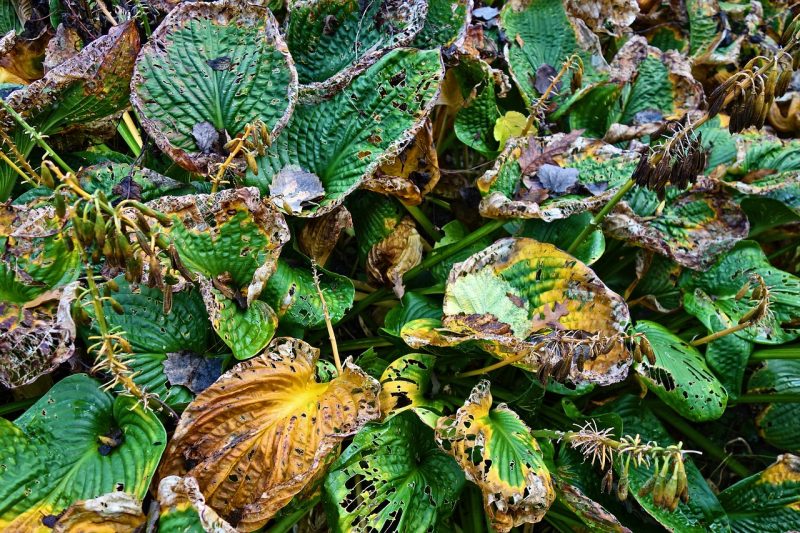
After you’ve made decision about cutting back or leaving your hostas, your focus should turn to preparing them for winter.
Mulching
Regardless of your cutting back choice, mulching is beneficial. Apply a layer of mulch around the base of your hostas. Organic materials such as shredded leaves or bark can help insulate the roots, keeping them warm during frigid temperatures.
Watering
Ensure your hostas are well-hydrated leading into winter. A deep watering in late fall helps to prepare them for winter dormancy. This is crucial, especially in regions with low snowfall, which reduces the natural moisture source.
Monitoring Winter Conditions
Keep an eye on winter weather conditions. If you experience exceptionally harsh weather without snow cover, consider adding additional mulch or protective foliage to shield the plants from the cold.
Hostas in Spring: The Comeback
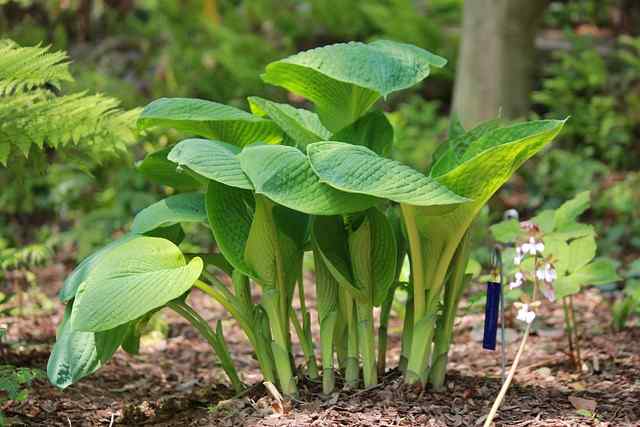
Come spring, the hostas that have been cut back or left intact will all go through a rebirth, pushing up fresh shoots and reviving their vibrant foliage.
Spring Care and Considerations
If you pruned your hostas in the fall, be aware that they may take a bit longer to rejuvenate compared to plants that were left unpruned. Apply a balanced spring fertilizer to support their growth during this crucial recovery period.
Observations and Adjustments
Monitor your hostas as they begin to grow. Look for signs of new growth and any potential issues that may arise. Depending on the health and development of your plants, you may wish to make adjustments in your care approach for the coming season.
Final Thoughts
So, should hostas be cut back in the fall? Ultimately, the answer lies within the particular needs of your garden and your goals as a gardener. Whether you choose to tidy up your landscape or allow nature to take its course, understanding the lifecycle of hostas, the pros and cons of cutting back, and proper seasonal care is essential to maintaining healthy and vibrant plants.


